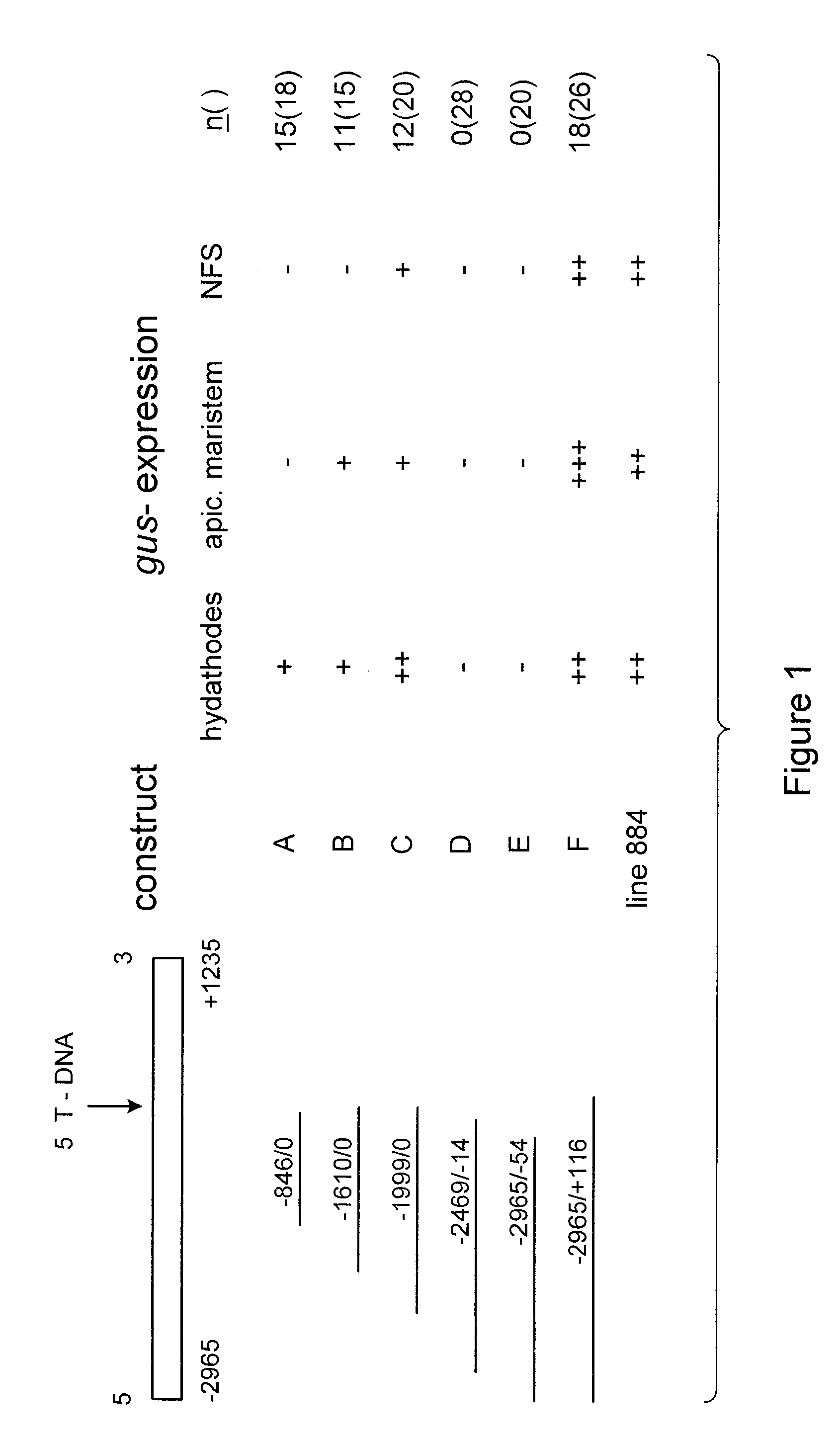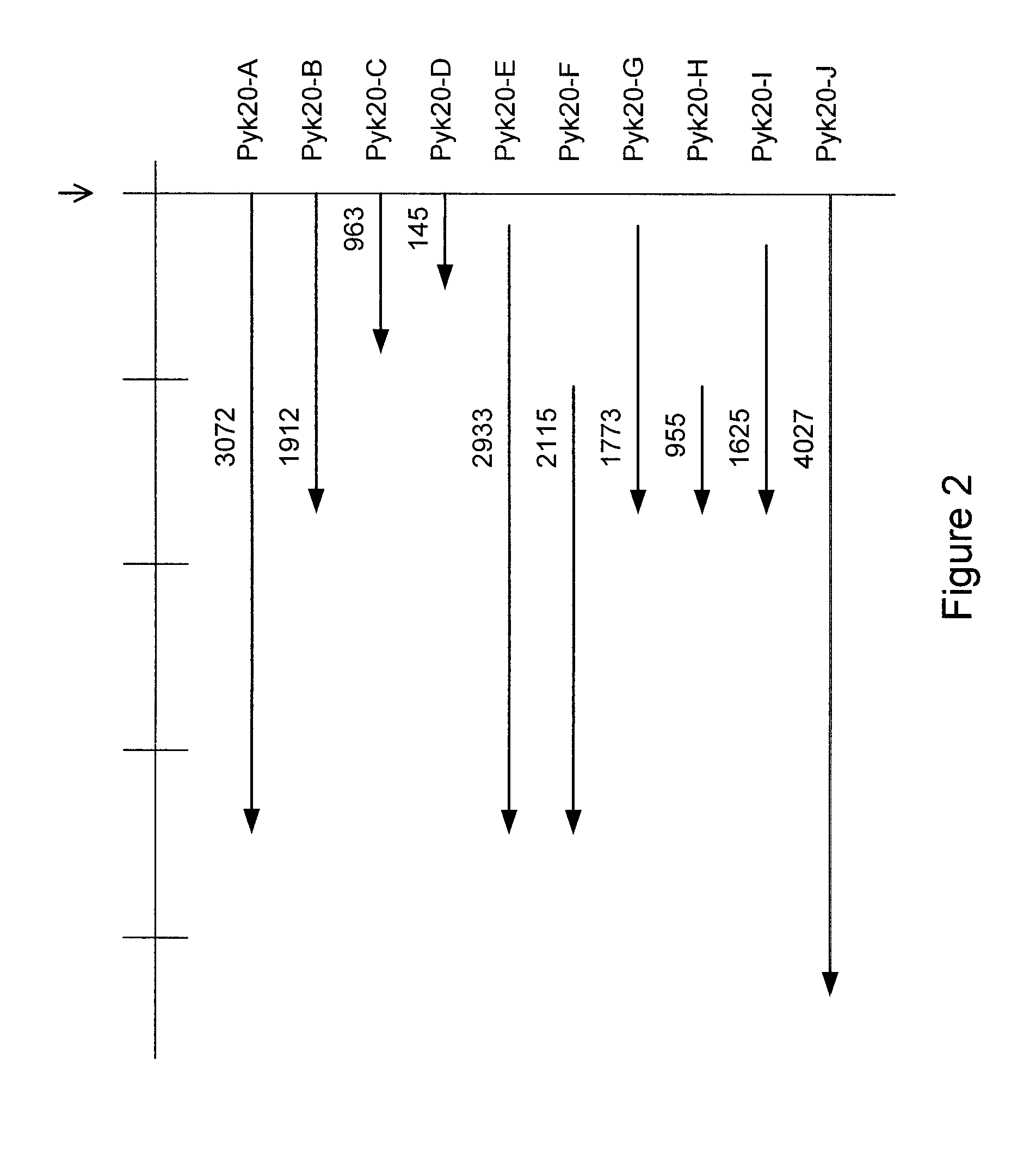Nematode-feeding structure specific gene and its application to produce nematode resistant plants
a nematode and structure specific technology, applied in the field of nematode-feeding structure specific gene and its application to produce nematode-resistant plants, can solve the problems of unsuitable tobrb7 sequence for use in chimerical constructs, not activated by a number of cyst nematodes, etc., and achieve the effect of suppressing the presence and/or the function
- Summary
- Abstract
- Description
- Claims
- Application Information
AI Technical Summary
Benefits of technology
Problems solved by technology
Method used
Image
Examples
example 2
Construction of Promoterless GUS Construct pMOG553
Construction of this vector is described in Goddijn et al. 1993 Plant J 4, 863-873. In this reference an error occurs; the construct contains a CaMV 35S RNA terminator behind the .beta.-glucuronidase gene instead of the indicated nos terminator. The sequence between the T-DNA borders of this binary vector is available from the EMBL database under accession number: X84105. pMOGS553 carries the HygR marker for plant transformation.
example 3
Identification and Isolation of a Trapped NFS-preferential Promoter Fragment in Arabidopsis thaliana
The binary vector pMOG553 was mobilized by triparental mating to Agrobacterium tumefaciens strain MOG101 which is described in detail in WO 93 / 10251. The resulting strain was used for Arabidopsis root transformation. More than 1100 transgenic Arabidopsis plant lines were obtained in this way. Transgenic plants were grown to maturity, allowed to self-fertilize and the resulting seeds (S1) were harvested and vernalized. Subsequently S1 seeds were germinated on nutrient solution (Goddijn et al. 1993 Plant J 4, 863-873) solidified with 0.6% agar, 10 mg / l hygromycin and stored at 4.degree. C. for a 4 day imbibition period. At day 5 the plates were transferred to room temperature and moderate light (1000 lux, 16 h L / 8 h D) for germination. Fourteen days old seedlings, resistant to hygromycin, were transferred to potting soil in tilted translucent plastic tubes (30.times.15.times.120 mm) for...
example 4
Identification of a Genomic Clone from wt Arabidopsis C24 Corresponding to the iPCR-amplified Plant Sequence
In order to obtain a larger promoter fragment and to determine plant sequences downstream of the T-DNA insertion site a genomic library of Arabidopsis in lambda GEM11 (circa 300 000 recombinant phages) was screened with the inverse PCR fragment as probe. Restriction analysis of the resulting genomic clone revealed a 4.2 kb EcoRI fragment which hybridized to the iPCR probe. Sequencing of this genomic EcoRI fragment revealed that the 5' end of the T-DNA had inserted at the 3' end of this clone leaving 2964 bp of 5' sequence and 1236 bp 3' to the T-DNA insertion, as shown in SEQ ID NO: 1.
PUM
| Property | Measurement | Unit |
|---|---|---|
| Density | aaaaa | aaaaa |
| Density | aaaaa | aaaaa |
| Density | aaaaa | aaaaa |
Abstract
Description
Claims
Application Information
 Login to View More
Login to View More - R&D
- Intellectual Property
- Life Sciences
- Materials
- Tech Scout
- Unparalleled Data Quality
- Higher Quality Content
- 60% Fewer Hallucinations
Browse by: Latest US Patents, China's latest patents, Technical Efficacy Thesaurus, Application Domain, Technology Topic, Popular Technical Reports.
© 2025 PatSnap. All rights reserved.Legal|Privacy policy|Modern Slavery Act Transparency Statement|Sitemap|About US| Contact US: help@patsnap.com


